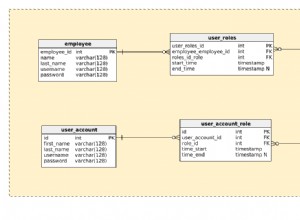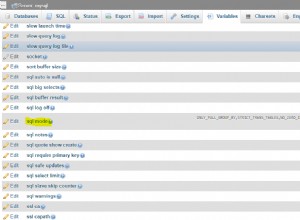Tudo bem, foi difícil. Por favor, dê uma olhada nesta consulta:
;with recursive minelem AS(
select arr, MIN(unnest) minel from (select arr, unnest(arr) from test) a group by arr),
testwithrn as(
select arr, row_number() over (order by minel) rn from minelem
),
cte(arr, rn, counter, grp) as(
select arr, rn, 1, 1 from testwithrn where rn = 1
union all
select
case when array_length(a.arr & b.arr, 1) > 0 then a.arr | b.arr else b.arr end,
b.rn,
case when array_length(a.arr & b.arr, 1) > 0 then a.counter + 1 else 1 end,
case when array_length(a.arr & b.arr, 1) > 0 then a.grp else a.grp + 1 end
from cte a inner join testwithrn b
on b.rn > a.rn
),
grouped as(
SELECT arr, counter, grp,
row_number() over (partition by grp order by counter desc) rn from cte)
select distinct arr from grouped where rn = 1
SQL Fiddle
Você pode testar diferentes CTEs na consulta acima para entender como cheguei à solução. A chave aqui é usar o operador | para mesclar arrays, como em
a.arr | b.arr Existe uma consulta recursiva chamada
cte que conta a ocorrência de cada conjunto dentro de diferentes grupos de conjuntos. Você pode substituir a última linha para select * from cte order by grp, counter para ver como o counter e grp são alterados quando os conjuntos são construídos recursivamente 



